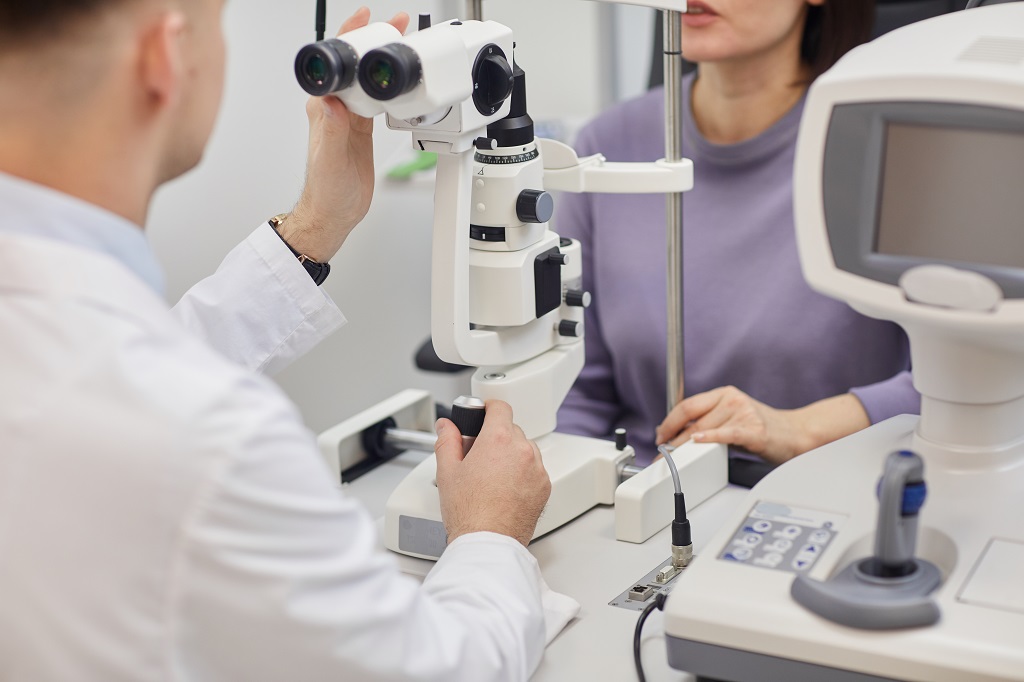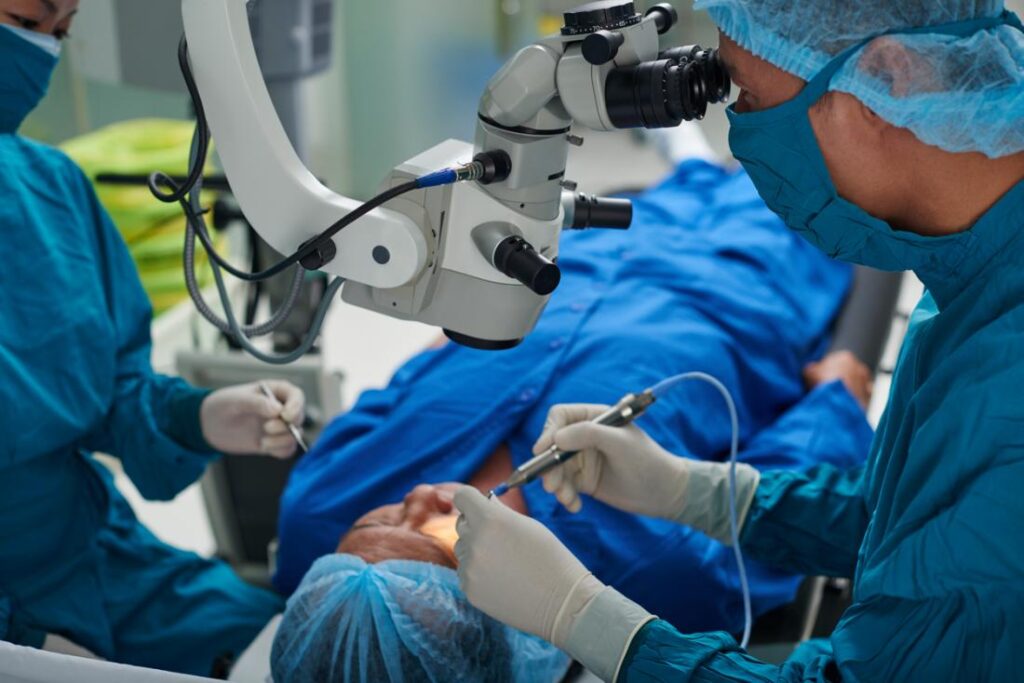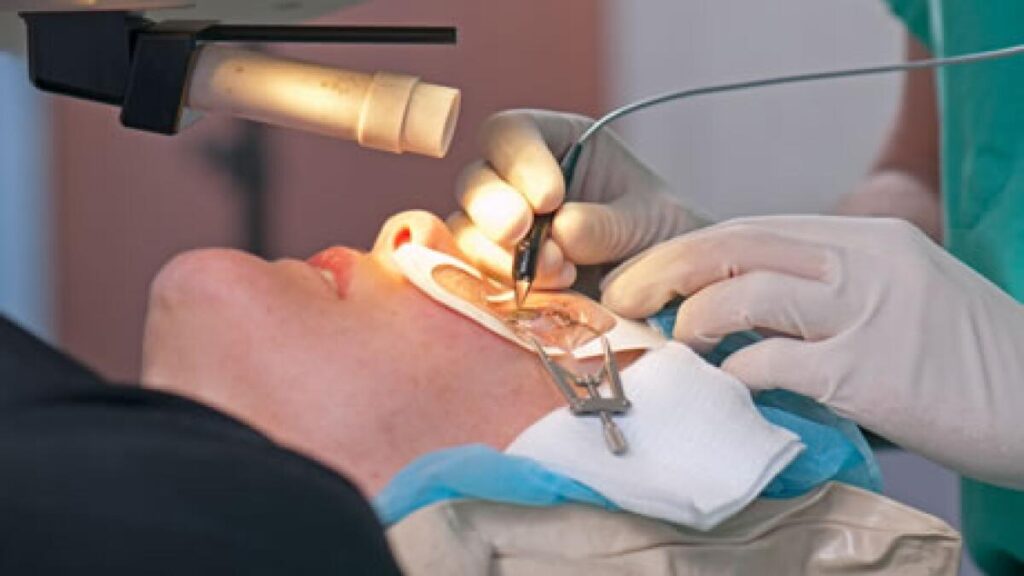Laser eye surgery has revolutionized the field of vision correction, providing individuals with the ability to see clearly without the need for glasses or contact lenses. This remarkable procedure utilizes the power of lasers to reshape the cornea, resulting in improved vision and a higher quality of life. In this article, we will delve deep into the world of laser eye surgery, exploring the science behind it, the different types of procedures available, the benefits it offers, and the potential risks involved. So, let’s take a closer look at this modern marvel and understand why precision is key when it comes to our precious sight.
The Science Behind Laser Eye Surgery
At the heart of laser eye surgery Sydney lies the incredible power of lasers. These highly precise beams of light can be used to remove a microscopic amount of tissue from the cornea, altering its shape and correcting refractive errors such as nearsightedness, farsightedness, and astigmatism. By reshaping the cornea, light entering the eye can be properly focused onto the retina, resulting in clearer vision and reduced dependence on corrective lenses.
The Role of Lasers in Vision Correction
Laser eye surgery involves the use of two types of lasers: the femtosecond laser and the excimer laser. The femtosecond laser is used to create a thin flap on the cornea, allowing the surgeon access to the underlying tissue. This flap is created with incredible precision, ensuring minimal disruption to the surrounding tissue. The excimer laser, on the other hand, is responsible for reshaping the cornea by removing tiny amounts of tissue with remarkable precision, typically in less than a minute.
During the surgery, the patient’s eye is carefully positioned under the laser system. The surgeon uses advanced computerized technology to guide the laser, ensuring accurate and customized treatment for each individual. The femtosecond laser creates a precise flap, which is then gently lifted to expose the underlying corneal tissue. The excimer laser, known for its ability to precisely remove tissue without generating heat, reshapes the cornea according to the patient’s specific prescription.

Throughout the procedure, the patient’s comfort and safety are of utmost importance. The laser systems used in modern laser eye surgery are equipped with advanced tracking systems that continuously monitor the eye’s position, making adjustments in real-time to ensure accurate treatment. This dynamic tracking system ensures that even small eye movements during the procedure do not compromise the precision of the laser treatment.
The Biological Process of Eye Healing Post-Surgery
After the surgery is completed, the cornea begins the healing process. The flap created during the procedure adheres naturally to the eye, eliminating the need for sutures. The cornea, being one of the fastest healing tissues in the body, quickly starts to regenerate and repair itself. The epithelial cells, which line the surface of the cornea, begin to migrate and cover the exposed area, protecting it from infection and aiding in the healing process.
Over time, the cornea regains its strength and stability, further improving vision. The reshaped cornea allows light to be properly focused onto the retina, resulting in clearer and sharper vision. Patients may experience some fluctuations in their vision during the initial healing period, but these typically resolve as the cornea stabilizes. Full recovery is usually achieved within a few weeks, with patients experiencing significantly improved eyesight shortly after the procedure.
It is important to note that while laser eye surgery can provide remarkable vision correction, individual results may vary. Factors such as the severity of the refractive error, the patient’s age, and the overall health of the eye can influence the outcome of the procedure. Therefore, a thorough pre-operative evaluation and consultation with an experienced eye surgeon are essential to determine the suitability of laser eye surgery for each individual.
Types of Laser Eye Surgeries
When it comes to laser eye surgeries, there is a wide range of options available to cater to the specific needs of individual patients. Let’s take a closer look at some of the most common procedures:
LASIK: The Most Common Procedure
LASIK, which stands for Laser-Assisted In Situ Keratomileusis, is undoubtedly the most popular and widely performed laser eye surgery. This procedure involves the use of a femtosecond laser to create a thin flap on the cornea. The flap is then delicately lifted, providing access to the underlying corneal tissue. With the help of an excimer laser, the cornea is reshaped to correct refractive errors, such as nearsightedness, farsightedness, and astigmatism. Once the reshaping is complete, the flap is meticulously repositioned, allowing for rapid healing and minimal downtime. LASIK has gained immense popularity due to its remarkable success rate and relatively quick recovery time.

PRK: An Alternative to LASIK
Photorefractive Keratectomy (PRK) is an excellent alternative to LASIK, especially for patients with thin corneas. Unlike LASIK, which involves creating a flap, PRK removes the cornea’s outer layer, known as the epithelium. By gently removing this layer, the underlying corneal tissue is exposed. The excimer laser is then used to reshape the cornea, correcting any refractive errors. As the epithelium naturally regenerates over time, vision gradually improves. Although the recovery time for PRK is slightly longer compared to LASIK, the results can be equally impressive. PRK is particularly suitable for individuals with corneas that may not be suitable for LASIK.
LASEK and Epi-LASIK: The Lesser Known Procedures
While LASIK and PRK are widely known, there are two lesser-known procedures called LASEK (Laser Epithelial Keratomileusis) and Epi-LASIK (Epithelial Laser In Situ Keratomileusis). These techniques are similar to PRK in that they involve the removal of the cornea’s epithelium. However, in LASEK and Epi-LASIK, the epithelium is preserved and carefully repositioned after the corneal reshaping procedure. This preservation of the epithelium allows for a quicker recovery compared to PRK. LASEK and Epi-LASIK are often chosen for patients who may not qualify for LASIK due to cornea or eye structure considerations. These procedures provide an alternative for those seeking vision correction but have specific anatomical factors that make LASIK less suitable.
It’s important to note that the choice of laser eye surgery depends on various factors, including the patient’s eye health, corneal thickness, and the nature of their refractive error. Consulting with an experienced ophthalmologist is crucial to determine the most suitable procedure for each individual.
Benefits of Laser Eye Surgery
One of the main reasons why laser eye surgery has gained immense popularity is the multitude of benefits it offers.
Not only does laser eye surgery provide long-term vision improvement, but it also offers a range of other advantages that enhance the overall quality of life for individuals.
Long-Term Vision Improvement
Laser eye surgery provides long-term vision improvement, often eliminating the need for glasses or contact lenses altogether. With clearer vision, individuals experience an enhanced quality of life, enjoying activities such as sports, reading, and driving without restrictions.
Imagine waking up in the morning and being able to see the world without reaching for your glasses or struggling to put in your contact lenses. Laser eye surgery can make this a reality, giving you the freedom to experience life with improved vision.
Whether you’re an avid traveler, a sports enthusiast, or someone who simply enjoys the beauty of everyday life, laser eye surgery can significantly enhance your visual experience.
Quick Recovery Time
One of the remarkable advantages of laser eye surgery is the rapid recovery time. In most cases, patients can resume their normal activities within a day or two, with some experiencing improved vision almost immediately after the procedure. This quick recovery allows individuals to return to their daily routines without significant disruption.
Imagine undergoing a simple procedure that can potentially transform your life and having the ability to bounce back quickly. Laser eye surgery offers just that. With minimal downtime, you can get back to work, spend time with loved ones, and engage in your favorite hobbies without having to worry about a lengthy recovery process.
Moreover, the quick recovery time also means that you can start enjoying the benefits of improved vision sooner rather than later. The world will become clearer and more vibrant, allowing you to fully appreciate the beauty that surrounds you.

Minimal Pain and Discomfort
Laser eye surgery is typically a painless procedure thanks to the numbing eye drops administered during the surgery. Most patients report little to no discomfort during the actual procedure or the subsequent recovery period. Any mild discomfort or irritation that may occur usually subsides within a few days.
When it comes to undergoing any medical procedure, the fear of pain and discomfort is often a concern for many individuals. However, with laser eye surgery, those worries can be put to rest. The use of numbing eye drops ensures that the procedure is virtually painless, allowing patients to feel at ease throughout the entire process.
Additionally, any discomfort or irritation that may arise during the recovery period is usually mild and temporary. The eyes quickly adjust and heal, providing individuals with the confidence that they made the right choice in opting for laser eye surgery.
In conclusion, laser eye surgery offers a multitude of benefits that go beyond just improving vision. With long-term vision improvement, quick recovery time, and minimal pain and discomfort, individuals can enjoy a life free from the constraints of glasses or contact lenses. Laser eye surgery opens up a world of possibilities, allowing individuals to fully embrace and appreciate the beauty of the world around them.
Potential Risks and Complications
Although laser eye surgery offers numerous benefits, it is essential to be aware of the potential risks and complications involved.
Temporary Vision Disturbances
Following laser eye surgery, some individuals may experience temporary vision disturbances such as glare, halos, or double vision. These effects are typically mild and improve over time as the eyes heal. In rare cases, they may persist, requiring further treatment or enhancement procedures.
Dry Eyes Syndrome
Another potential side effect of laser eye surgery is dry eyes syndrome. This condition occurs when the eyes do not produce enough tears, leading to discomfort, itching, and a gritty sensation. However, the majority of individuals experience only temporary dryness, which resolves within a few months with the help of lubricating eye drops.
Flap Complications in LASIK
In LASIK procedures, complications related to the corneal flap can occasionally arise. These include flap dislocation, epithelial ingrowth, and flap wrinkles. While these issues are relatively rare, they can affect vision and may require additional surgery to correct.
While the risks associated with laser eye surgery are generally low, it is important to consult with a qualified and experienced eye surgeon who can assess your suitability for the procedure and address any concerns you may have. By understanding the wonders of laser eye surgery and its potential risks, you can make an informed decision about whether it is the right choice for you. Remember, precision in every glance is something we should never take for granted.
More to read: Diving Deep into the Features and Benefits of ResMed AirSense 10

